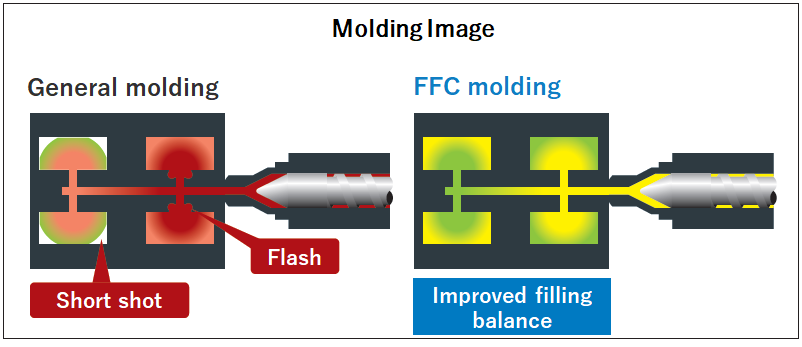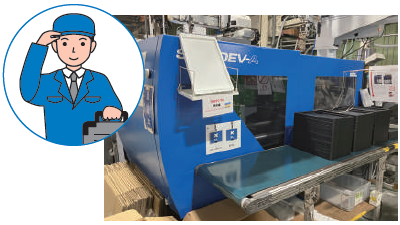*This article is translated using machine translation.
Please be aware that the accuracy of the translation is not guaranteed. Some proper nouns might not be translated correctly.
JEJ Astage Co., Ltd. does molding for cooler boxes, storage cases, etc.
The opportunity to introduce the molding machine came when Mr. Watanabe was troubled by defect such as gas burn, air entrapment, and short shot, and a business partner introduced him to Sumitomo Heavy Industries' Zero-molding, which he said was effective in eliminating defect.
About three years have passed since the system was introduced, and we spoke to them about the current situation while looking back at the challenges they faced at the time.
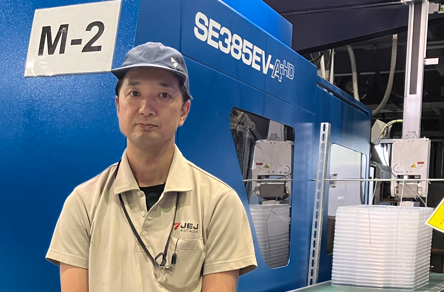 Mr. Takeshi Okumura, Deputy director, Molding Technology Department
Mr. Takeshi Okumura, Deputy director, Molding Technology Department
 From the left, Mr. Syuichi Watanabe, Deputy director, Production Engineering Department
From the left, Mr. Syuichi Watanabe, Deputy director, Production Engineering Department
Mr. Toyotaka Kikura, Supervisor, Production Engineering Department
Company Profile
In addition to offering their own original products, JEJ Astage Co., Ltd. handles OEM and made-to-order products across a wide range of categories, including household goods, home appliances, office equipment, industrial products, and construction-related items. Their strength in original product development lies in their ability to manage everything in-house--from planning and design to manufacturing and sales. To improve production efficiency, they are promoting automation in post-processing and implementing labor-saving measures. As part of their environmental initiatives, the company is focusing on producing molded products using rice resin, a sustainable material made from recycled old rice and crushed rice that would otherwise be discarded.
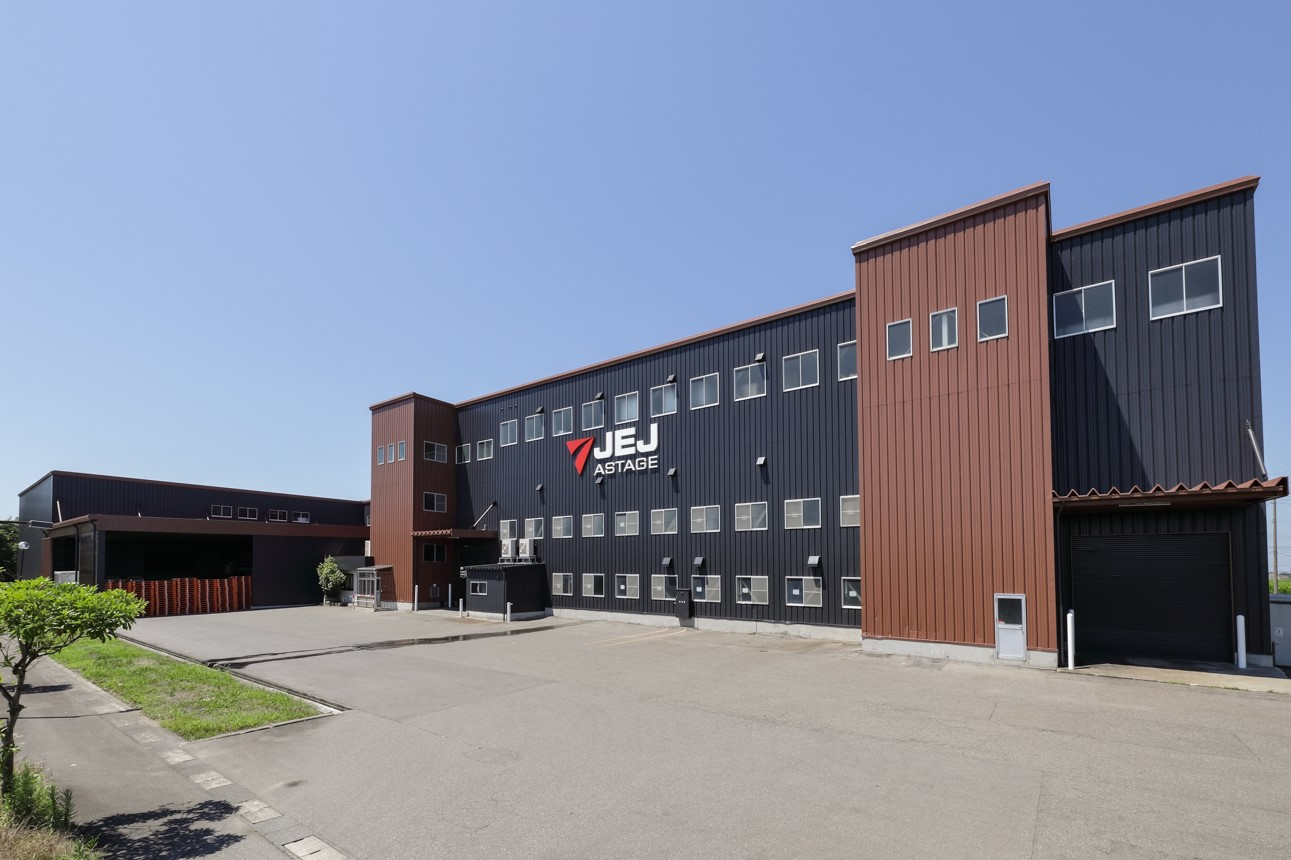 JEJ Astage Co., Ltd. Yahiko Factory
JEJ Astage Co., Ltd. Yahiko Factory
Issue 1: Poor cavity balance causes gas burn and short shot
The product called cooler box buckle is mass production using a four-cavity mold . In one of these locations, the status was such that it was relatively difficult for gas to escape. The prevention of burrs was given top priority, so the clamping force was not adjustment, and gas release was prevented by using a low injection speed.
However, even when the injection speed was reduced to the lower limit possible value, the gas could not be completely released, and gas burn frequently occurred.
In addition, the low injection speed caused the resin to solidify during molding, resulting in short shot. Although they tried to solve the problem by increasing the injection speed again, they found themselves caught in a vicious cycle where gas burn occurred again, and they were at a loss as to how to deal with the problem.
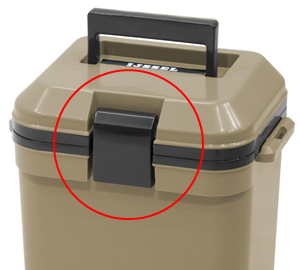 Buckle (resin: PP)
Buckle (resin: PP)
Issue 2: Poor resin flow causes air entrapment
The hinge part of the cooler box lid is the end of the resin flow path, and is a place where the resin flow is likely to become poor.
In particular, the part of the shaft where the resin is finally filling in was unable to completely remove the gas, which resulted in air being trapped and creating a cavity, making it prone to lack of strength.
JEJ Astage Co., Ltd. tried to prevent gas release by slowing down the injection speed, but they were still concerned about short shot, just like with the buckle mentioned above.
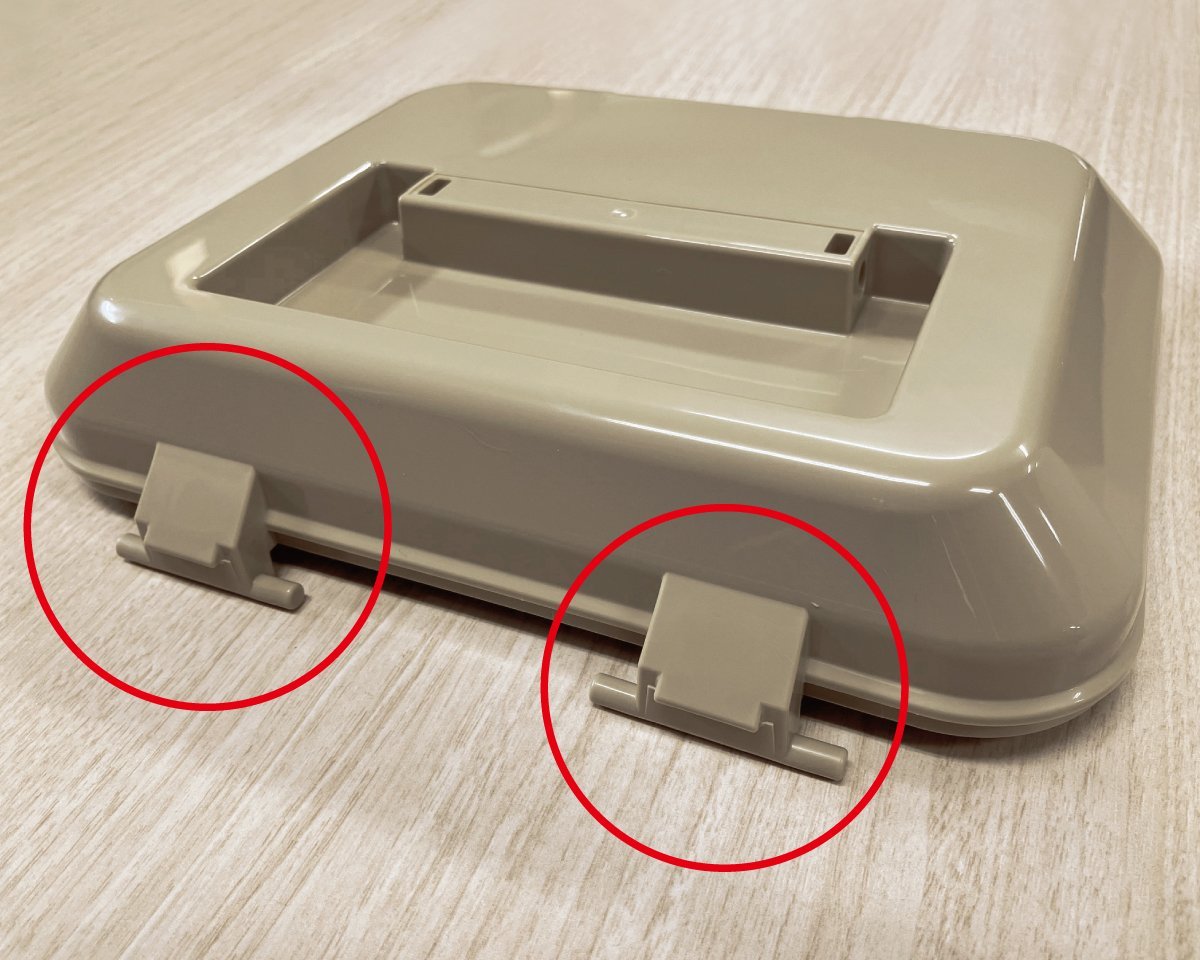 Hinge part (resin: PP)
Hinge part (resin: PP)
Issue 3: warpage and twist occur when molding thin wall walls
The overseas-made resin used for the storage case lids varies in quality between lots. Occasionally, lots with extremely high and low flow would be mixed together, and it was impossible to judge the condition until the actual molding process was carried out.
Lots with too high flow were prone to flash, while lots with low flow caused the molded product to warpage or twist, requiring adjustment to the conditions each time.
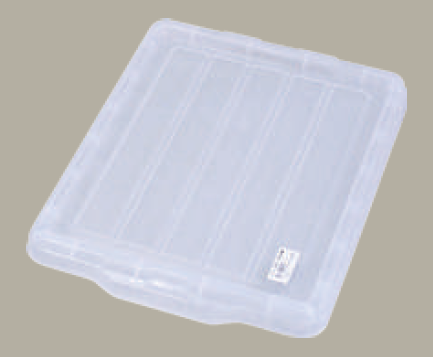 Storage case lid (resin: PP)
Storage case lid (resin: PP)
In both cases, the person in charge had to be called to the molding site regularly to deal with any defective products that occurred.
The person in charge's own work stagnated, leading to a decline in work efficiency.
Furthermore, when they could not arrive at the site immediately, downtime occurred, resulting in lost time for on-site workers.
SE-EV Series Solution
Improved gas burn, air entrapment, warpage and twist
The minimum clamping force detection function uses a clamping force sensor to automatically sensing the minimum clamping force when the mold parting surface are in complete contact, making it easy to determine the minimum required clamping force as a guideline. To utilize these function, our molding engineers support with machine operation in an actual molding environment.
As a result, the gas remaining inside could be completely removed through the gas vent, and we were told that "problems such as gas burn and air entrapment were solved as if by magic." Furthermore, by reducing the mold clamping force during cooling, the stress on the molded product can also be reduced, and it has been evaluation that this also "has the effect of eliminating warpage and twist."
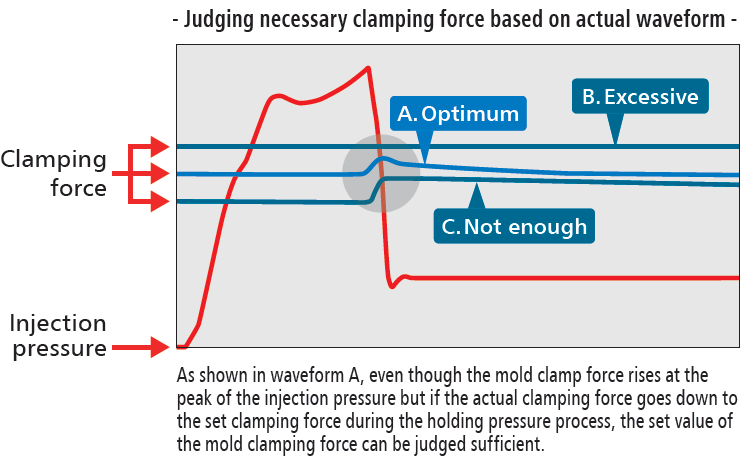 The mold clamping force sensor displays the waveform in real time during the molding process. According to the explanation, the waveform is extremely useful as it makes it easy to check whether the set mold clamping force is appropriate.
The mold clamping force sensor displays the waveform in real time during the molding process. According to the explanation, the waveform is extremely useful as it makes it easy to check whether the set mold clamping force is appropriate.
Improving short shot
Our Flow Front Control function enables smooth filling with low injection pressure utilizing the viscoelasticity of resin by control screw before and after the VP OFF switch. By utilizing this function, users can now use simple setting without having to unnecessarily slow down the injection speed.
As a result, no short shots occurred, and the wider tolerance range for molding process eliminated the need for resin lot-specific adjustments. JEJ Astage Co., Ltd. has shared that they are now able to perform molding "without stress." Additionally, the occurrence of defective products has significantly decreased, and JEJ Astage Co., Ltd. noted, "We've reduced the number of on-site calls--which used to happen several times a day--to almost zero. Production efficiency has improved, and the workload on supervisors has also been greatly reduced."
High Satisfaction with Sumitomo Heavy Industries' After-Sales Support
Even after the introduction, our molding engineers have continued to make regular visits. , and JEJ Astage Co., Ltd. has expressed high satisfaction, saying, "We are very satisfied with the detailed lectures on how to use the molding machine. It was also helpful to realize that there's still room for improvement in our molding process." We will continue to make regular visits to our customers, proactively offering suggestions on process improvements, quality control, molding skills, and more, in order to contribute to our customers' businesses.
JEJ Astage Co., Ltd.'s future strategies
- JEJ Astage Co., Ltd. is working to improve efficiency by introducing robots into post-production tasks that were previously done by hand, such as assembling insulation materials inside cooler boxes.
- The company also promotes eco-friendly practices by crushing and repelletizing defective products generated in-house, then reusing them in molding to reduce waste.
Products
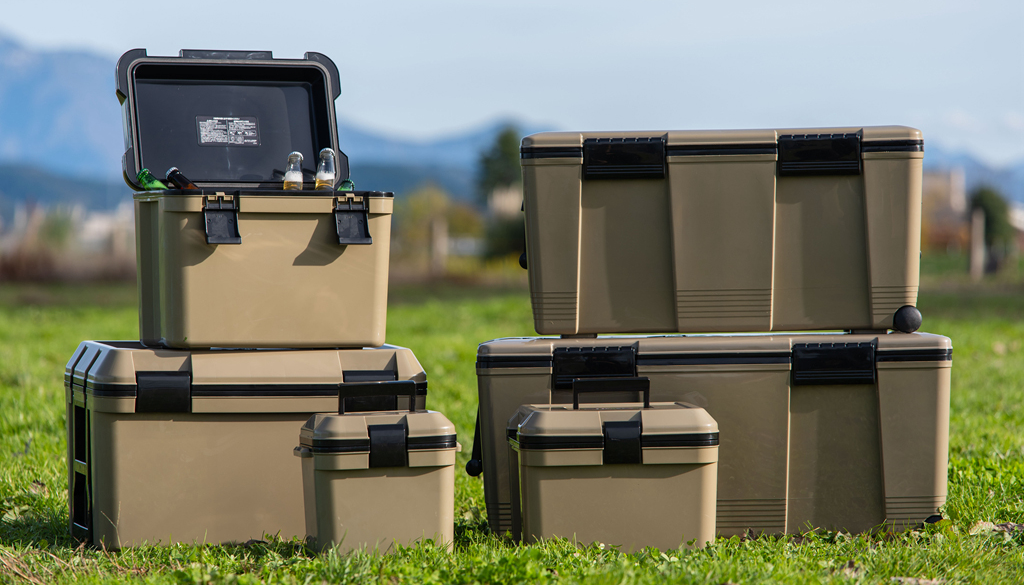
Website
https://jej-astage.co.jp/en/
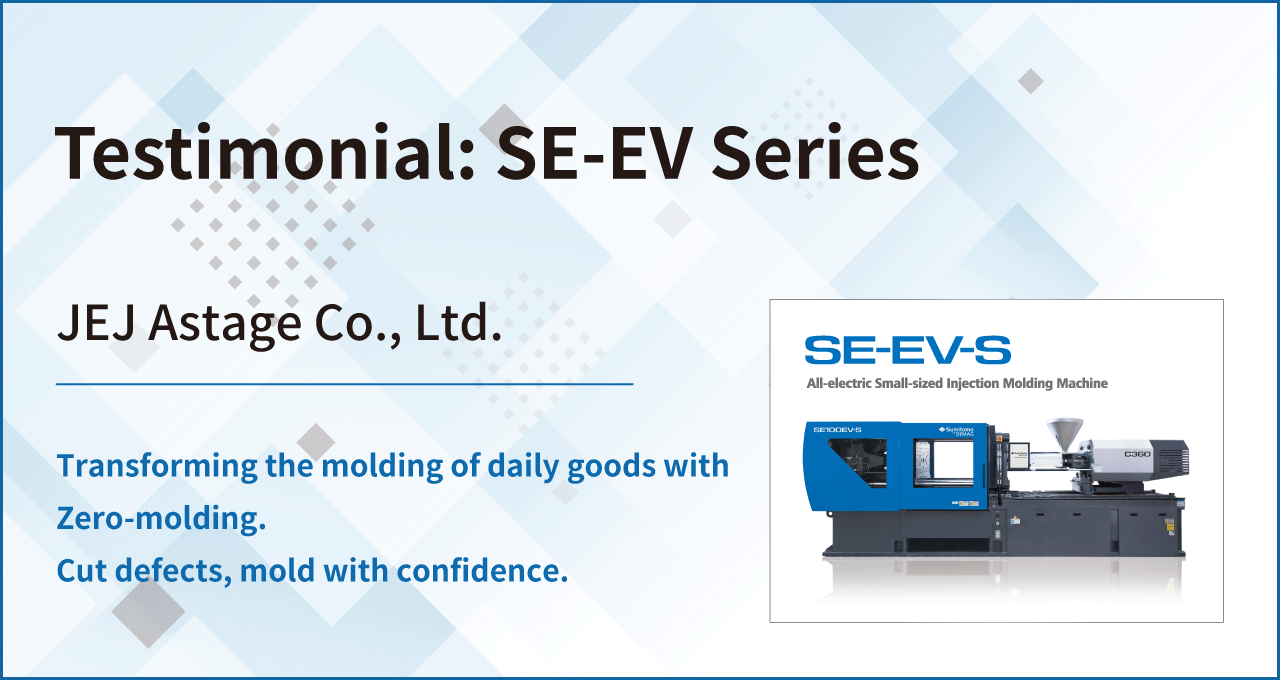
 Mr. Takeshi Okumura, Deputy director, Molding Technology Department
Mr. Takeshi Okumura, Deputy director, Molding Technology Department From the left, Mr. Syuichi Watanabe, Deputy director, Production Engineering Department
From the left, Mr. Syuichi Watanabe, Deputy director, Production Engineering Department JEJ Astage Co., Ltd. Yahiko Factory
JEJ Astage Co., Ltd. Yahiko Factory Buckle (resin: PP)
Buckle (resin: PP) Hinge part (resin: PP)
Hinge part (resin: PP) Storage case lid (resin: PP)
Storage case lid (resin: PP) The mold clamping force sensor displays the waveform in real time during the molding process. According to the explanation, the waveform is extremely useful as it makes it easy to check whether the set mold clamping force is appropriate.
The mold clamping force sensor displays the waveform in real time during the molding process. According to the explanation, the waveform is extremely useful as it makes it easy to check whether the set mold clamping force is appropriate.